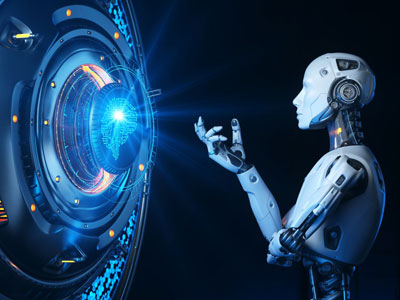Key Takeaway
Robots offer numerous benefits in industrial applications. They can perform dangerous tasks, keeping workers safe from harm. For example, robots can work in hazardous conditions, such as poor lighting, exposure to toxic chemicals, or confined spaces. They can lift heavy loads without risk of injury or fatigue. By handling these risky jobs, robots significantly reduce workplace accidents. Moreover, robots enhance efficiency and productivity by operating continuously without breaks. This not only ensures consistent quality but also boosts overall output in manufacturing and other industrial processes.
Increased Efficiency
Increased efficiency is crucial for optimizing operations and maximizing productivity. At IndMALL, we specialize in enhancing industrial processes through innovative automation solutions and reliable products. Our focus on efficiency extends from streamlined logistics to advanced machinery, ensuring seamless integration and reduced downtime. With a commitment to cutting-edge technology and client-centric services, we empower businesses to achieve their operational goals effectively. Discover how our tailored solutions and expertise can elevate your industrial capabilities, driving growth and profitability in competitive markets.

Enhanced Precision
Robots excel in performing tasks with unmatched precision, crucial in industries like electronics and pharmaceuticals where meticulous accuracy is non-negotiable. Imagine handling delicate electronic components; a minor error can lead to significant defects. Robots consistently execute intricate procedures with minimal error, ensuring high-quality outcomes. In medical surgeries, robotic systems assist surgeons, enhancing the precision of movements and significantly improving patient outcomes. This precision translates to better quality products and services, reducing waste and the need for rework, which boosts operational efficiency. In essence, robots are indispensable for tasks requiring absolute accuracy.
Furthermore, the consistent performance of robots minimizes variations, a common issue in manual operations. This consistency is vital for maintaining high standards, particularly in mass production environments. For example, in pharmaceutical manufacturing, robots ensure the exact dosage of medication, preventing errors that could have severe consequences. By handling repetitive tasks with high precision, robots free up human workers for more complex, value-added activities. This integration of robots into precision-demanding roles not only enhances productivity but also fosters innovation, as human creativity is directed towards problem-solving and process improvement.
Safety Improvements
In industries where hazardous conditions are prevalent, safety is paramount, and robots play a crucial role in enhancing it. Robots can operate in environments dangerous for humans, such as those involving toxic substances, extreme temperatures, or heavy machinery. For instance, in chemical plants, robots handle toxic materials, preventing human exposure and significantly reducing the risk of accidents. By performing high-risk jobs, robots protect the workforce, minimizing workplace accidents and injuries. This safety enhancement not only safeguards employees but also reduces associated costs, such as medical expenses and lost workdays.
Moreover, robots excel in handling physically demanding tasks, reducing the risk of injuries caused by manual labor. They can lift heavy loads, work in confined spaces, and manage exposure to hazardous materials, tasks that pose significant risks to human workers. By taking on these dangerous jobs, robots ensure that human workers can focus on safer, more strategic tasks. This shift not only improves overall workplace safety but also enhances productivity, as robots work tirelessly without the need for breaks, ensuring continuous operation in challenging environments.
Cost Reduction
While the initial investment in robotic technology may be substantial, the long-term cost savings are considerable. Robots reduce labor costs by performing tasks that would require multiple human workers. In a manufacturing setting, for example, a single robot can handle various tasks traditionally performed by different specialized machines, cutting down equipment costs and floor space requirements. This versatility leads to significant savings over time, offsetting the initial investment and resulting in a substantial return on investment.
Additionally, robots minimize errors and waste, directly lowering production costs. In industries like automotive manufacturing, robots assemble parts with high precision, reducing defects and the need for rework. This efficiency translates to faster production times and higher-quality products. Furthermore, robots’ ability to work continuously without breaks leads to increased productivity, further driving down operational costs. By integrating robots into their processes, companies not only achieve cost savings but also enhance their competitive edge in the market through improved efficiency and product quality.
Innovation Enablement
Robots are at the forefront of enabling innovation across various industries, allowing companies to explore new manufacturing techniques, improve product designs, and enhance service delivery. In research and development, robots automate complex testing procedures, accelerating the innovation process. For instance, in the automotive industry, robots test new vehicle models, providing valuable data that drives further innovation. This rapid prototyping and iterative testing enable companies to bring innovative products to market faster and more efficiently.
Furthermore, robots facilitate the exploration of advanced manufacturing techniques, such as additive manufacturing (3D printing), which were previously impractical. By handling precise and repetitive tasks, robots free human workers to focus on creative and strategic activities, fostering an environment conducive to innovation. This synergy between robotic automation and human ingenuity leads to groundbreaking advancements in various fields, from healthcare to aerospace. By embracing robotic technology, companies not only enhance their current operations but also pave the way for future innovations, ensuring sustained growth and competitiveness in the global market.
Conclusion
Robotics offer numerous benefits across industries, enhancing efficiency, precision, and safety in operations. They streamline repetitive tasks, minimize errors, and boost productivity, crucial in manufacturing, healthcare, and beyond. With advancements in AI and automation, robotics promise cost-effectiveness and scalability, driving innovation and competitive advantage. Embracing robotics ensures higher output quality and resource optimization, making them indispensable in modern industrial applications.
